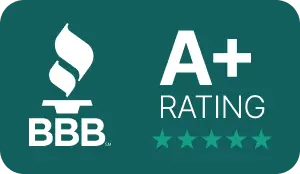When someone passes away leaving behind a family home, the estate often encounters an extra layer of legal complexity known as homestead protection. These protections are designed to safeguard a primary residence from certain creditors and to ensure that surviving spouses or dependents retain rights to the property. While this protection is invaluable, it can also shape how heirs access inheritance funds and whether options like an inheritance advance are available. Understanding the interaction between homestead rules, probate proceedings, and inheritance funding is essential for heirs who want to make informed financial decisions.
How Homestead Protections Affect Estate Assets
Not all assets in probate are treated equally, and homestead property receives unique legal treatment. In many states, the family home cannot be sold to satisfy most debts, and its distribution may bypass certain aspects of probate altogether. This means heirs may not have immediate access to the property’s value, even if they are entitled to it under a will.
This distinction highlights the importance of knowing how different asset types—from property to liquid accounts affect inheritance funding. While cash accounts may be easier to advance against, homestead property is often restricted, requiring heirs to explore other portions of the estate if they seek immediate liquidity.
Costs Tied to Homestead-Based Inheritances
While homestead laws protect the property itself, heirs may still face costs related to the home. Property taxes, insurance premiums, and maintenance expenses don’t stop during probate. These obligations can create financial stress, particularly if the home is unoccupied or awaiting eventual transfer.
Inheritance funding can be used to cover these expenses, but the cost of obtaining funds will vary depending on how much of the estate’s value lies outside the protected homestead. Funding companies evaluate the estate’s overall structure, meaning fees can be higher if most of the estate’s assets are tied to property with limited availability. Understanding the true cost of accessing an advance helps heirs weigh whether funding is worth the expense in light of homestead restrictions.
Deciding Between Waiting and Accessing Funds Now
One of the most common dilemmas heirs face is whether to wait for probate to conclude or pursue funding upfront. Homestead protections often extend the time it takes for heirs to gain clear ownership or access to the home’s equity. For heirs with urgent needs, waiting may not be feasible.
This is where funding options offer relief. By advancing a portion of the inheritance tied to other assets in the estate, heirs can cover pressing expenses while probate unfolds. The decision ultimately depends on balancing patience with practicality. Exploring the differences between waiting for probate and seeking fast cash helps beneficiaries decide if accessing funds now is the better choice, especially when homestead rules slow the process.
Covering Personal Expenses During Probate
Even when the family home is legally protected, heirs may still be dealing with personal financial burdens. Credit card debts, medical bills, or tuition payments can’t be put on hold until probate concludes. Similarly, property-related obligations like repairs or mortgage payments may require attention before heirs ever gain formal possession of the home.
Funding provides a bridge by allowing heirs to tap into their inheritance early. The money can be used not only for personal financial needs but also for maintaining estate property during probate. Heirs considering this option often recognize the practical value of using funding to cover debts, property obligations, and personal expenses when other resources are limited.
How Probate Rules Shape Access to Homestead Assets
Ultimately, it is probate law that determines how and when heirs can access inheritance linked to homestead property. Courts follow specific rules to ensure surviving spouses and dependents are protected, and these rules influence whether an advance is available and to what extent.
Because funding is tied to the estate’s assets, the presence of a homestead can limit or delay what heirs may receive upfront. For some, this means advances are drawn from non-homestead assets; for others, it may reduce the size of the advance altogether. Understanding how probate rules govern access to advances helps heirs anticipate how homestead protections will affect their funding opportunities.
Why a Probate Advance Can Still Help
Even with restrictions on homestead property, many heirs still benefit from inheritance funding. A probate advance does not require heirs to sell or borrow against the home. Instead, it allows them to access a portion of their overall inheritance tied to other estate assets. This makes it possible to manage financial responsibilities without compromising homestead protections.
While the family home may be shielded from creditors and delays, heirs can still find stability by leveraging other parts of the estate through inheritance funding. This balance allows families to honor legal protections while addressing the realities of ongoing financial obligations.
Conclusion: Navigating Homestead Protections and Funding
Homestead protections safeguard one of the most important assets an estate can hold: the family home. While these rules provide security for surviving spouses and dependents, they also add complexity for heirs who need access to inheritance funds. From covering property costs to meeting personal financial obligations, inheritance funding can offer a practical solution—though the extent of funding often depends on what portion of the estate lies outside the homestead.
By understanding how asset types, costs, probate rules, and funding structures interact, heirs can make informed decisions about whether to wait, seek an advance, or use a combination of both. In many cases, inheritance funding provides the financial flexibility heirs need while ensuring homestead protections remain intact.








